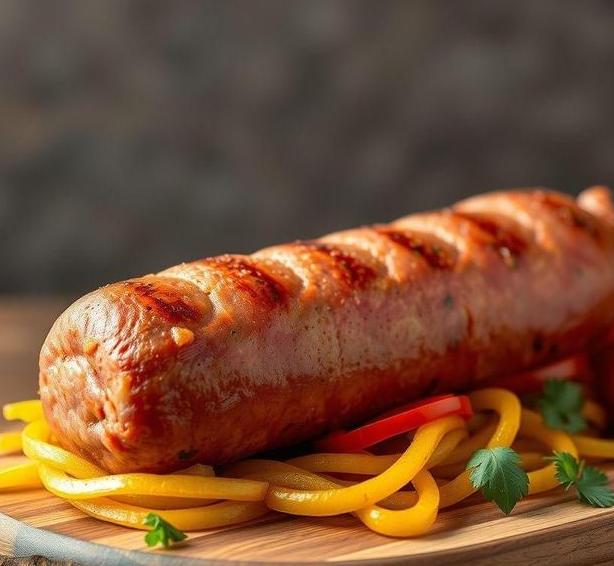Can Italian Sausage Go Bad : What You MUST Know
Italian sausage is a beloved culinary staple in many kitchens. With its delicious blend of seasonings-like fennel, garlic, and red pepper flakes-it’s perfect for everything from hearty pasta dishes to savory sandwiches. But as much as we love it, there’s always the inevitable question: can Italian sausage go bad? After all, it’s a perishable meat, and the last thing anyone wants is to unknowingly eat spoiled food. It can be hard to know how to tell when Italian sausage has gone bad, how long it lasts, or how to store it properly. So, let’s dig into these details so you can enjoy your sausage safely and make the most of its flavors!
Can Italian Sausage Go Bad?
Yes, like any other type of meat, Italian sausage can definitely go bad. Its high fat content and combination of spices make it susceptible to spoiling if not stored properly. Spoiled sausage can lead to foodborne illnesses, so it’s essential to recognize the signs of spoilage and learn the best practices for storing it. Just because Italian sausage has a rich and bold flavor doesn’t mean it can last indefinitely. So, whether you bought it fresh, cooked it, or froze it for later, knowing its shelf life and signs of spoilage will help you avoid any unwanted health risks.
Shelf Life For Italian Sausage

How long your Italian sausage stays fresh depends largely on its storage conditions. Here’s a breakdown of how long you can expect it to last:
Fresh Italian Sausage
- In the fridge: Fresh, uncooked Italian sausage typically lasts 1 to 2 days in the fridge. That’s because it’s a raw product, and even though it’s packed with spices, it’s still subject to bacterial growth.
- In the freezer: If you don’t plan on using your sausage right away, it’s best to freeze it. Frozen uncooked sausage can last up to 6 months without significant loss of flavor or quality. Just be sure to wrap it tightly in plastic wrap or foil and then place it in a freezer-safe bag or container to avoid freezer burn.
Cooked Italian Sausage
- In the fridge: Once cooked, Italian sausage lasts a bit longer than its raw counterpart. You can safely store cooked sausage in the fridge for 3 to 4 days. After this period, the chances of bacterial contamination increase.
- In the freezer: Cooked sausage can be frozen for up to 2 to 3 months, but it’s best eaten sooner for optimal flavor. Freezing cooked sausage will change its texture slightly, but it will still be delicious when reheated.
Vacuum-Sealed Or Pre-Packaged Sausage
- Pre-packaged, vacuum-sealed Italian sausages tend to last a little longer. When stored properly, they can last up to 2 weeks in the fridge. However, always check the ’use by’ or ’sell by’ date to be sure.
Common Signs Of Spoilage
Knowing when your Italian sausage has gone bad is crucial for preventing any health issues. Below are some of the most common signs to look for:
- Off smell: Fresh Italian sausage will have a savory, seasoned scent. If it starts to smell sour, rancid, or just off, it’s a clear indication that it’s no longer safe to eat.
- Change in texture: Spoiled sausage will often feel slimy or sticky to the touch, which is a sign that bacteria have started to grow. If the sausage feels tacky or unusually mushy, it should be discarded.
- Discoloration: Fresh sausage is typically a pink or reddish color. As it spoils, the color may turn brown, gray, or even greenish, which indicates that the meat is no longer fresh.
- Mold growth: While mold doesn’t often appear on sausages, if it does, that’s a definite red flag. Mold on the surface, especially if it’s green, black, or white, signals that the sausage is no longer edible.
- Change in packaging: If the packaging of vacuum-sealed sausage is compromised or bloated, this could indicate bacterial growth or that the sausage has gone bad.
How To Store Italian Sausage?

Proper storage is key to extending the shelf life of your Italian sausage and preventing spoilage. Let’s break it down by storage type:
In The Refrigerator
- Storage tip: Always store fresh sausage in its original packaging or in an airtight container. If the package has been opened, rewrap the sausage tightly in plastic wrap or wax paper and place it in a resealable plastic bag. This will minimize exposure to air, which can speed up the spoiling process.
- Optimal temperature: The fridge should be kept at a temperature of 40°F (4°C) or below to slow bacterial growth. A thermometer inside your fridge can help ensure it’s at the right temperature.
In The Freezer
- Freezing tips: If you plan to freeze your sausage, first wrap it in plastic wrap or aluminum foil, then place it in a heavy-duty freezer bag or vacuum-sealed bag. This double layer of protection will help prevent freezer burn and preserve the sausage’s flavor and texture.
- Labeling: Label the package with the date of freezing, so you can keep track of how long it’s been stored. This is especially helpful when you have several items in the freezer.
After Cooking
- Cooling before refrigerating: When storing cooked sausage, allow it to cool at room temperature for no more than 2 hours before placing it in the fridge. This prevents bacteria from growing while it cools.
- Airtight containers: Store cooked sausage in an airtight container or tightly wrapped in plastic wrap. This will prevent the sausage from drying out and ensure it retains its flavor.
Expert Tips
- Avoid Cross-Contamination: When handling Italian sausage, especially raw, make sure to use separate cutting boards, utensils, and surfaces from those used for other foods like vegetables or fruits. Raw meat can transfer harmful bacteria if it comes into contact with other items.
- Keep it Cold: If you’re cooking Italian sausage but need to transport it (for example, to a picnic or BBQ), keep it in a cooler with ice packs to maintain a cold temperature. Warm sausage can spoil quickly.
- Use Freezer Paper for Long-Term Storage: If you freeze your sausage for long periods, wrapping it in freezer paper before placing it in a vacuum-sealed bag can provide additional protection from freezer burn.
- Thaw Properly: When thawing frozen sausage, always do so in the fridge overnight. Never thaw sausage at room temperature, as this can cause harmful bacteria to grow rapidly.
- Cook Thoroughly: Always cook Italian sausage to an internal temperature of 160°F (71°C) to ensure it’s safe to eat. A food thermometer is a handy tool to have for accurate cooking.
FAQs
Can Italian Sausage Go Bad In The Fridge?
Yes, Italian sausage can go bad in the fridge. Fresh Italian sausage typically lasts for 1 to 2 days in the refrigerator, while cooked sausage can last 3 to 4 days. If stored improperly or past these time frames, the sausage can spoil and pose a risk of foodborne illness.
How Can I Tell If Italian Sausage Has Gone Bad?
You can tell if Italian sausage has gone bad by checking for signs such as a sour or off smell, a slimy texture, or discoloration. If the sausage appears gray or green, or has a foul odor, it should not be eaten.
How Long Can Italian Sausage Last In The Freezer?
Italian sausage can last in the freezer for up to 6 months if stored properly in an airtight container or freezer bag. After this time, while it may still be safe to eat, the quality may begin to decline.
Can Italian Sausage Go Bad If It’s Vacuum-sealed?
Vacuum-sealed Italian sausage can last longer than non-vacuum-sealed sausage. When stored properly in the refrigerator, it can last for up to 1 week past the sell-by date. In the freezer, it can last for up to 6 months.
Can Italian Sausage Spoil Without Being Cooked?
Yes, uncooked Italian sausage can spoil if not stored properly. If left at room temperature for more than 2 hours, bacteria can multiply rapidly, leading to spoilage and possible food poisoning.
What Should I Do If I Accidentally Left Italian Sausage Out Overnight?
If Italian sausage has been left out at room temperature for more than 2 hours, it is generally unsafe to eat, as bacteria can grow quickly. Discard the sausage to avoid the risk of foodborne illness.
Does Cooking Italian Sausage Extend Its Shelf Life?
Yes, cooking Italian sausage can extend its shelf life. While raw sausage lasts 1 to 2 days in the refrigerator, cooked sausage can last 3 to 4 days. Be sure to store it properly in an airtight container or tightly wrapped.
Can I Eat Italian Sausage After The Sell-by Date?
The sell-by date is a guideline for freshness. Italian sausage may still be safe to eat after the sell-by date if it has been stored correctly and shows no signs of spoilage. However, always inspect the sausage for any off smells, discoloration, or sliminess before eating.
Can Italian Sausage Cause Food Poisoning If It Goes Bad?
Yes, if Italian sausage goes bad and is consumed, it can cause food poisoning. Bacteria like Salmonella, E. coli, and Listeria can grow on spoiled sausage, leading to symptoms such as stomach cramps, vomiting, and diarrhea.
How Should I Store Italian Sausage To Prevent It From Going Bad?
To prevent Italian sausage from going bad, store it in the refrigerator at 40°F (4°C) or below. If you don’t plan to use it within a few days, freeze it in an airtight container or freezer bag to maintain quality for up to 6 months.
